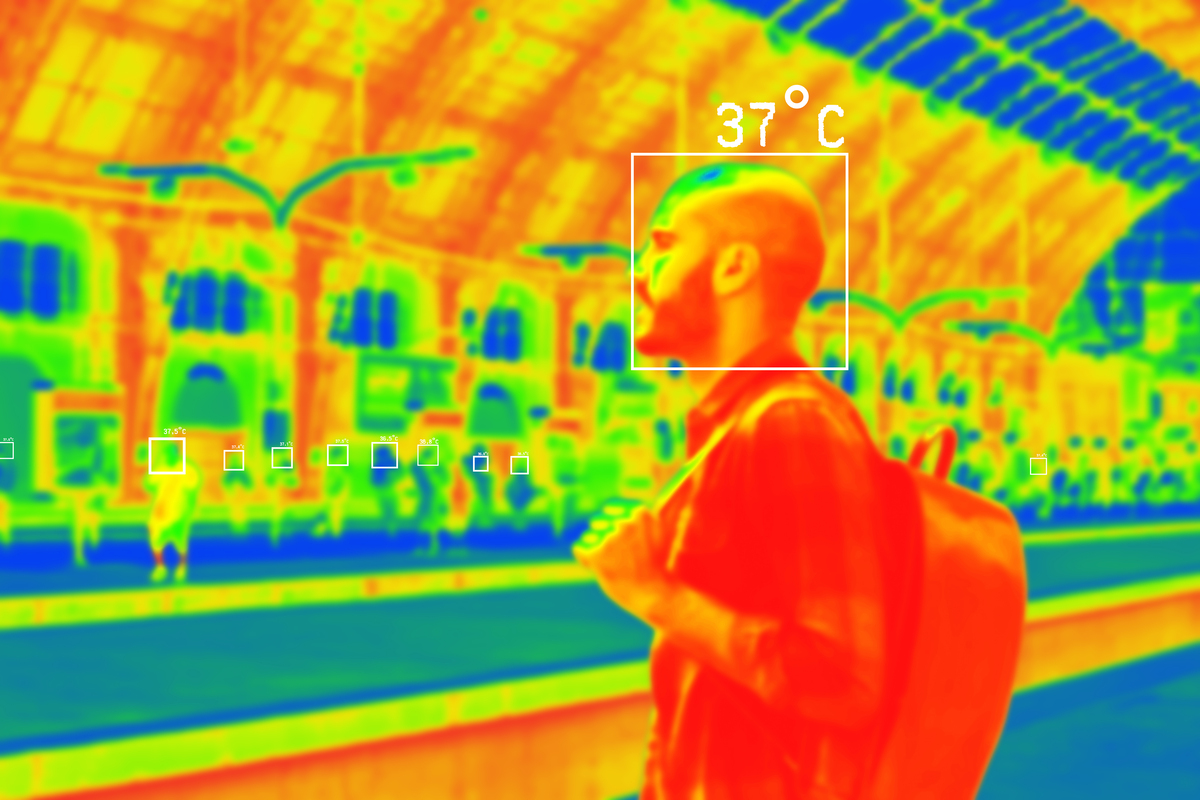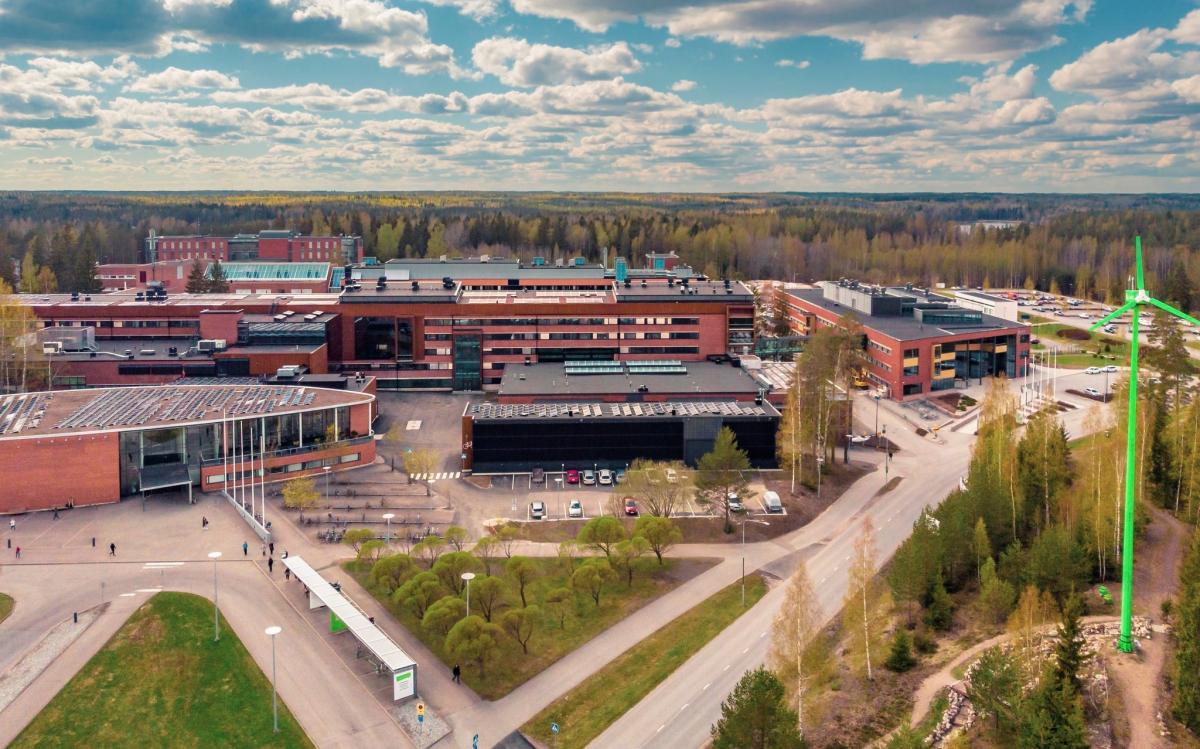Updated by Nazanin Ghodsian, 04/25/2025
In the European Union, buildings consume a significant amount of energy, although very few of the current construction is categorized as energy efficient. The European Union has implemented energy directives aimed at optimizing the built environment’s energy efficiency and sustainability, incorporating intelligent technologies. Thus, in order to evaluate buildings according to their preparedness to boost performance via the use of smart technologies, the Smart Readiness Indicator (SRI) for Buildings approach is being created and is anticipated to become a standard technique.
Buildings in the European Union consume a significant amount of energy, but many of them are inefficient. The EU introduced energy directives to improve sustainability through the use of smart technologies in order to address this. A standardized approach called the Smart Readiness Indicator (SRI) is being created to evaluate how prepared buildings are to use these technologies to increase performance.
The Smart Readiness Indicator (SRI) identifies the flexibility needed for future energy systems and enables the digitization of buildings. Even though the latest SRI version makes assessments simpler, some energy flexibility methodologies and geographical considerations—particularly in the Nordic context—need to be further refined.
Table of Contents
Smart Readiness Indicator (SRI) Background
Member states are required to develop long-term plans to integrate energy systems in safer, more sustainable, and low-carbon buildings by 2050, in accordance with the European Energy Efficiency in Buildings directive. This method identifies and assesses a building’s smart readiness as well as its ability to adjust its operations in response to network and occupant needs using a shared, optional regime. The smart readiness indicator (SRI) was created as a result. The assessment of a building’s technological preparedness is based on the existence and functionality of different smart services, with the objectives being energy efficiency, user-friendliness, and energy flexibility.
It is a fact that there is now a dearth of study and data regarding smart ready indicators for buildings. Since smart buildings are still a relatively new topic, research and development are still being done in this field. In a recent study, the methodology for determining the Smart Readiness Indicator (SRI) was studied in relation to the most recent directive on the energy performance of buildings. They discovered that this indicator may be used for any kind of building use and produces accurate findings about how energy loads are displaced and how the building interacts with energy networks.
Suggested article to read: Building Energy Optimization; Comprehensive Guide 2025
Recent research indicates that different building types require different formulas for calculating the Smart Readiness Indicator (SRI). It is known that a building’s technical systems vary depending on what purpose they serve. This study also discovered that by correctly calculating the Let’s Investigate How Researchs Indicates that Different Building Types Require Different Formulas to Calculate Smart Readiness Indicator (SRI) …, structures that are capable of producing energy as well as managing the generation, transmission, and distribution of utilities can be found. Public structures, such as educational ones, are crucial in this setting.
After it has been consolidated and its shortcomings fixed, it is expected that the Smart Readiness Indicator (SRI) will be included in the energy class computation for buildings in the next years, with the indicator’s outcome being included in the energy certificate.
What is the SRI, or Smart Readiness Indicator?
“Smartness” refers to a building’s ability to sense, interpret, communicate, and respond to changes in its technology systems’ performance, the outside world (including energy grids), and the demands of its occupants. The Smart Readiness Indicator (SRI) rates buildings (or building units) based on how successfully they can carry out three main tasks. Enhance the effectiveness of the current system and its energy efficiency. Adjust how they operate to the occupant’s demands. Adjust to grid signals (such as energy flexibility).
The benefits of smart building technology, such as building automation and electronic building system monitoring for HVAC, lighting, ventilation, and hot water, will be better known to the general public thanks to the Smart Readiness Indicator (SRI). The Let’s Investigate How Researchs Indicates that Different Building Types Require Different Formulas to Calculate Smart Readiness Indicator (SRI) … framework is utilized to stimulate technological innovation in the building sector by promoting the incorporation of state-of-the-art smart technologies into structures.
Suggested article to read: Construction HVAC Systems; Ultimate Guide for 2025

Smart Readiness Indicator (SRI) for Buildings
“The Smart Readiness Indicator (SRI) should be used to measure the capacity of buildings to use information and communication technologies and electronic systems to adapt the operation of buildings to the needs of the occupants and the grid and to improve the energy efficiency and overall performance of buildings,” states the 2018 amendment to the EPBD (Energy Performance of Buildings Directive).
Let’s Investigate How Researchs Indicates that Different Building Types Require Different Formulas to Calculate Smart Readiness Indicator (SRI) …’s primary goals are to increase public knowledge of building automation and monitoring systems, as well as the advantages and value they provide. The three essential building functions 1-3 and the two optional functions 4-5 are the foundation of the approach, according to the EPBD (European Parliament 2018, Annex Ia):
1. Adjusting energy use in accordance with the output of renewable energy sources.
2. Adjusting the operation mode to the needs of the occupants.
3. Flexibility in energy demand dependent on the state of the electric grid.
4. System communication between appliances, building automation, and smart meters.
5. Making use of the communication networks that are accessible.
Suggested article to read: Building Energy Monitoring Systems; Guide to 2025
Through promoting smart technology knowledge, Let’s Investigate How Researchs Indicates that Different Building Types Require Different Formulas to Calculate Smart Readiness Indicator (SRI) … hopes to boost investment motivation and encourage general technological innovation in the building industry. Regardless of age, any structure can use this methodology. Identify three primary audiences for Let’s Investigate How Researchs Indicates that Different Building Types Require Different Formulas to Calculate Smart Readiness Indicator (SRI):
- Facility managers;
- Building tenants, owners, and investors;
- Service providers, including network operators, designers, engineers, manufacturers, and others.
Smart Readiness Indicators are characterized as straightforward, clearly comprehensible indicators that don’t conflict with current national energy performance certificates. Additionally, consideration must be given to all privacy, data security, and ownership standards outlined in current legislation.
The European Commission is tasked with developing and defining this indicator, and all member states must be given equal opportunity to participate. Verbeke et al. are in charge of developing the technical specifications (2020). The goal of the technical support study, which is the current stage of Smart Readiness Indicator (SRI) development, is to provide technical specifications that will aid in the final definition stage. Defining the calculating technique in accordance with the EPBD and adding the following standards is one of the key goals.
Applicability of Smart Readiness Indicator
In reality, Smart Readiness Indicator (SRI) need to promote useful and efficient technological advancements that:
- Tangibly increase energy, financial, or environmental performance;
- Positively affect the attained Smart Readiness Indicator score; and
- Enhance functionality in the basic EPBD functions (energy performance, adaptability to user needs, and energy flexibility).
In essence, Let’s Investigate How Researchs Indicates that Different Building Types Require Different Formulas to Calculate Smart Readiness Indicator (SRI) just evaluates a building’s intelligence while ignoring other, more traditional yet crucial energy performance elements like appliance efficiency and insulation quality.
It is crucial to remember that the most lucrative energy performance investments may have nothing to do with intelligence at all.
Smart Readiness Indicator (SRI) could be thought of as a complement to EPC, extending specific energy demand evaluation to technical functionality, in the two potential Let’s Investigate How Researchs Indicates that Different Building Types Require Different Formulas to Calculate Smart Readiness Indicator (SRI) implementation paths already identified, which link Let’s Investigate How Researchs Indicates that Different Building Types Require Different Formulas to Calculate Smart Readiness Indicator (SRI) to the currently mandatory energy performance certificate system or to building construction and renovation work.
Suggested article to read: Zero Energy Buildings (ZEB); Comprehensive Guide 2025
Presumably, Let’s Investigate How Researchs Indicates that Different Building Types Require Different Formulas to Calculate Smart Readiness Indicator (SRI) would become rather quickly widespread with any mandatory implementation.
However, because of the related expense and work, an obligatory Let’s Investigate How Researchs Indicates that Different Building Types Require Different Formulas to Calculate Smart Readiness Indicator (SRI) assessment may not be well received, which would leave some of its potential unrealized.
As a result, it is thought that a voluntary program would be preferable in order to let the general population freely learn about the advantages that Let’s Investigate How Researchs Indicates that Different Building Types Require Different Formulas to Calculate Smart Readiness Indicator (SRI) provides. It might also spark interest in employing SRI as a tool for building development rather than just as a prerequisite for categorization.

SRI as a Building Development Tool
Realizing investments are necessary to achieve the long-term goals of Smart Readiness Indicator (SRI), particularly quantifiable financial and environmental benefits. Utilizing Smart Readiness Indicator (SRI) as a voluntary building development tool could be one sensible approach.
It was felt that the final SRI score was insufficient as a foundation for developing building energy performance. Instead, its usefulness as a comparative, commercial, or suggestive classification was acknowledged. Sub-score matrices can be used to do a more thorough analysis of the score components in the context of building development. Domain scores or aggregated effect may be adequate for higher-level analysis. We recommend the following strategy as a place to start:
- Examine the Smart Readiness Indicator (SRI) domain-impact result matrix, taking note of each combination’s sub-scores.
- If you would like to see gains in any particular areas or impacts, focus particularly on those sub-scores. If not, choose the domain-impact pairs that have the lowest ratings.
- Determine which services have an impact on the chosen couples’ scores by using the Smart Readiness Indicator (SRI) catalogue. The easiest approach is to contrast certain and maximal functionalities.
- An even more sophisticated approach would be to investigate impact criterion point matrices.
- Assess the services’ capacity to enhance Smart Readiness Indicator (SRI) scores by raising their functionality levels. After every adjustment, record the results on the scoring sheet.
- If the impacts on scores are good, think about the technical changes that need to be done in order to meet the specifications of the chosen functionality levels.
This strategy is predicated on the idea that technical advancements that support Smart Readiness Indicator (SRI) (SRI) level enhancements have tangible positive effects on the economy and environment. The case study’s research indicates that this may not always be the case for all services due to climate or other conditions, hence development recommendations based on Smart Readiness Indicator (SRI) findings should always be evaluated to additional financial, environmental, and energy analysis. Furthermore, it might be difficult to estimate the effects of subjective impact criteria like “Comfort” or “Health and well-being,” particularly in the short run.
The development of an interactive tool that finds the services distributing points for selected domain-impact sub-scores could facilitate and expedite the process of tracking the pertinent services in accordance with the methodology. The tool could also provide a list of development recommendations and show how they affect scores.
It is important to remember that Smart Readiness Indicator (SRI) does not evaluate every installed or available energy performance feature. Instead, it speaks about the technological preparedness that could lead to improved energy efficiency. Smart Readiness Indicator (SRI) should be used as a steering tool to identify development areas to concentrate on, as making changes only based on Smart Readiness Indicator (SRI) ratings without additional assessment could result in ineffective outcomes.
Smart Readiness Indicator (SRI) in Energy Management Functions
The majority of the evaluated buildings delegated energy management responsibilities to outside energy managers with ongoing objectives to enhance energy performance. Monthly energy reports were frequently sought by building managers or occupants from energy managers. Energy management systems (EnMS) are widely used, so it’s important to talk about if Smart Readiness Indicator (SRI) could be connected to them in any way.
An EnPI is a measure or unit that represents energy performance using a straightforward metric, ratio, or model. Smart Readiness Indicator (SRI) score technically meets the definition of an EnPI since it is a simple relative statistic. However, SRI’s direct viability as an EnPI looks unlikely because it evaluates technological readiness more so than quantifiable energy performance.
A different approach would be to think about the intrinsic value of smart preparedness, in which case Smart Readiness Indicator (SRI) might be directly applicable as EnPI, particularly in the future. However, the specific benefits of this strategy are questionable because sustainability metrics already provide a more reliable means of measuring some of the purported benefits of Smart Readiness Indicator (SRI) (energy, environmental, and financial).
Occupant comfort and indoor air quality are examples of parameters that can be measured using certain SRI sub-scores, which would effectively complement subjective occupant feedback as EnMS inputs. SRI assessment allows for a more systematic and perhaps automated examination of these parameters because it solely relies on technical functionality.
Case Study
The evaluated case building and verified Smart Readiness Indicator (SRI) outcomes are shown in this section.

LUT University Campus
The Lappeenranta LUT campus area is home to seven university buildings that were built between 1975 and 2004 in various phases. It also has a student union building (1994) and a university of applied sciences building (2011), albeit neither is evaluated in this study. The campus has a total floor space of about 70,000 m2. (Lappeenranta City, 2018)
In Finland, several property management firms frequently own public buildings. University Properties of Finland Ltd (SYK), which is held by the Finnish state and nine Finnish universities (including LUT University) outside the 51 Helsinki metropolitan region, owns and operates the campus buildings 1 through 7 of LUT University Lappeenranta. With a focus on sustainability and responsibility, SYK is a campus developer that owns 1,300,000 m2 of campus sites throughout Finland.
Local renewable energy generation has been installed due to the influence of the LUT Green Campus concept. As a result, the campus buildings have approximately 1700 photovoltaic (PV) modules and a solar power plant with a maximum electric power of over 500 kW mounted on their roofs and walls. (2020, LUT University).
The campus buildings have distinct technical systems with differing levels of functioning because they were built in different eras. To ensure reliable results, each of the seven campus buildings—52—was evaluated independently for this study; however, alternative methods could also be used.
- Every campus building has a very similar set of fundamental technical features.
- District heating provides the heat (DH).
- Radiators and a central heating system with distribution fluid, or floor heating in individual rooms.
- A centrally located mechanical ventilation system that can recover heat.
- Mechanical cooling devices in addition to the controlled central ventilation system’s cooling feature.
- Using DH to heat domestic hot water without storing.
- HVAC system set-points modified to account for variations in outside temperature.
Conclusion
The Smart Readiness Indicator (SRI) for Buildings project was started based on the EPBD. With the goal of delivering results that are comparable across EU member states, SRI is meant to establish a standard process for evaluating buildings based on their technological readiness to improve energy performance using smart technology. The development effort is entrusted to Verbeke et al. (2020), who will deliver the technical specifications of Smart Readiness Indicator (SRI) to the European Commission and will report progress through interim reports.
Smart Readiness Indicator (SRI) was acknowledged for promoting technical advancement, digitization, and connectivity in the EU building industry. SRI is distinguished from other building rating systems by its technical building capacity indicator, which is expanded to include occupant comfort, convenience, health, and information considerations.
Transparency, objectivity, and a quick and easy assessment method are the benefits of Smart Readiness Indicator (SRI). In contrast to commercial sustainability rating systems like BREEAM and LEED, SRI does not monitor energy usage, environmental impact, or cost savings. It also does not directly take sustainability into account. Technical means for reaching the quantifiable objectives are evaluated by Smart Readiness Indicator (SRI). It acknowledges the advantages of interconnected systems and the necessity for energy flexibility, particularly for upcoming requirements.
Certain features included in Smart Readiness Indicator (SRI) might not be really useful right now. For example, as the feed-in tariff is insufficient for a successful feed-in, the maximum electric power output of local renewable energy generation is often dimensioned to cover the base load of the building. However, as demand for energy storage, flexible energy demand, and renewable balancing power grows, the landscape may shift with financial incentives.
FAQs
What is the Smart Readiness Indicator (SRI) for buildings?
- Answer: A statistic called the SRI is used to evaluate a building’s capacity to accommodate smart technology that improve sustainability, energy efficiency, and occupant comfort.
Why is the SRI Important for Building Management?
- Answer: Better energy management and occupant satisfaction result from building owners and operators evaluating and refining their smart technology integration with the aid of the SRI.
How is the SRI Calculated?
- Answer: The energy performance of a building, its automation systems, and its capacity to adjust to changing user demands and energy supply conditions are all taken into account when calculating the SRI.
What are the Benefits of a High SRI Score?
- Answer: Long-term sustainability is aided by improved energy efficiency, improved occupant satisfaction, and greater property value, all of which are indicated by a high SRI score.
How does the SRI Relate to Sustainability Goals?
- Answer: By encouraging the integration of smart technology that lower energy usage and carbon emissions in buildings, the SRI is in line with sustainability objectives.
Suggested article for reading:
7 Innovative Construction Robotics Changing the Industry
Digital Transformation: The Role of 5G Technology in Construction
12 Cutting-Edge Technologies in Construction Automation You Need to Know
What is Reversible BIM? 2025 Guide
Scan to BIM Solutions; 2025 Ultimate Guide
Resources:
LUT.FI | MDPI | Rehva | BMK | Euroheat| ScienceDirect | ComfortConsulting
For all the pictures: Freepik | ELUT





